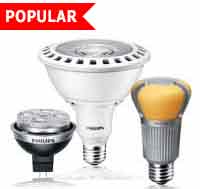Light bulb ban creates public health risks
On Jan. 1, less than one month from now, the government-mandated ban on the sale of tried-and-true 100 watt incandescent light bulb will go into effect. As a result, consumers will have no choice but to buy alternative light bulbs such as compact fluorescent lamps (CFLs). Therefore, it is time to take stock of the significant health hazard posed by the presence of mercury in those bulbs.
Recognizing the harmful effects arising from exposure to the mercury in CFLs, the Environmental Protection Agency has published a set of guidelines on handling broken CFLs. These guidelines call for residents of a house to immediately open a window in the contaminated room (if there is one), shut off any central, forced-air heating and air-conditioning systems serving the contaminated room, and then leave the room and preferably the building without walking through the breakage area.
Those left behind to clean up the contaminated area are advised to scoop up the broken pieces of the lamp and to place them in a sealed plastic bag, to wipe the contaminated area clean with damp paper towels or the like, to place the used paper towels in a glass jar or plastic bag and to then seal the jar or plastic bag. Clothing or bedding that may have been contaminated by the broken lamp should not be washed, but instead thrown away, presumably in a sealed plastic bag.
These guidelines may be austere, but for good reason. Exposure to the mercury vapors in a broken CFL can cause cancer and damage to vital internal organs such as the liver and lungs. Inhalation of the mercury vapors also can lead to blindness in young children.
In publishing these guidelines for handling broken CFLs, the EPA has chosen not to tell the public about the health hazards arising from exposure to the mercury vapors. The guidelines also neglect to advise those responsible for cleaning up broken bulbs about taking measures to minimize the harmful effects inevitably arising from exposure to the mercury fumes. Perhaps the harmful effects cannot be avoided, short of donning a protective Hazmat suit. The federal government also has chosen not to require CFL manufacturers to place a warning on packages about the health hazards associated with the mercury. (A skull-and-crossbones might be in order in view of the severe health risks mentioned above.)
Instead, CFL packages on store shelves merely state that the lamps contain mercury, leaving it to the consumer to ferret out the associated health risks.
When all is said and done, it seems that our federal government and those environmental zealots favoring the use of CFLs have gone out of their way to avoid informing the public about the severe health hazards associated with them. They seem to think that greater good will come from the reduced energy arising from the use of CFLs and the corresponding reduction of emissions from burning fossil fuels needed to supply the needed electricity.
HARRISON E. McCANDLISH
Alexandria
Source for this article: Washington Times

















Comments